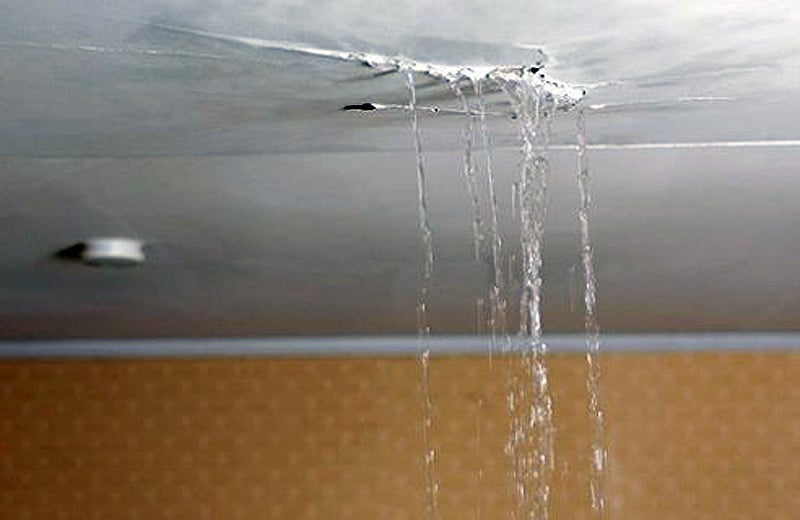Revealing Major Sources Behind Residential Water Leak Issues
Revealing Major Sources Behind Residential Water Leak Issues
Blog Article
We've discovered this great article on How to detect water leaks in your home below on the web and accepted it made perfect sense to relate it with you on this site.

Leaks not only create waste of water however can also create unnecessary damages to your home as well as advertise undesirable organic development. By looking as well as comprehending for everyday scenarios that trigger leaks, you can shield your house from future leaks as well as unnecessary damage.
Intruding roots
A lot of water leaks start outside the house rather than inside it. If you see an abrupt reduction in water pressure, claim in your faucet, take time to head out as well as examine your yard. You may see damp spots or sinkholes in your backyard, and that could indicate that tree origins are getting into water lines creating water to leak out. You can have your plumber look for invasion, especially if you have trees or hedges near your residential property.
Corroded water systems
As time goes by, your plumbing system ages and also deterioration such as corrosion might begin gnawing the pipes. This might be the reason for discoloration or warping on your water pipes. This requires an assessment with your plumber promptly. If our plumbing system is old, think about replacing the pipes because they go to a greater danger of corrosion than the newer versions.
Malfunctioning Pipeline Joints
The factor at which your pipelines attach is regularly the weakest link in the waterline. Pipe joints can deteriorate gradually, leading to water leakages. Regrettably, the majority of pipeline joints are not easily visible. If you have noisy pipelines that make ticking or banging noises, specifically when the hot water is turned on, your pipe joints are probably under a lot of pressure. It is recommended to have your plumber examine your system yearly.
Instantaneous temperature level modifications.
Extreme temperature level modifications in our pipes can create them to broaden as well as acquire suddenly. This development as well as contraction might cause cracks in the pipelines, especially if the temperature level are below freezing. If you maintained an eye on just how your plumbing functions, it would certainly be best. The presence of the formerly discussed scenarios regularly shows a high danger.
Poor Water Connectors
At times, a leak can be caused by loosened hoses and pipelines that provide your home appliances. In case of a water links leakage, you may notice water running straight from the supply line or puddles around your devices.
Clogged Drains
Clogged drains could be annoying and also inconveniencing, yet they can in some cases wind up causing an overflow bring about rupture pipelines. Keep eliminating any kind of products that might go down your drains that might block them to prevent such troubles.
All the above are root causes of leakages yet not all water leakages arise from plumbing leaks; some leaks may originate from roof covering leakages. All leakages should be repaired promptly to avoid water damage.
Leakages not just create waste of water yet can also cause unnecessary damages to your residence and promote unwanted natural growth. By looking and comprehending for day-to-day circumstances that cause leaks, you can safeguard your residence from future leakages and unnecessary damage. Today, we will certainly look at 6 leak creates that might be triggering your pipes to drip.
At times, a leakage can be triggered by loose hose pipes and pipes that provide your appliances. In instance of a water links leakage, you might observe water running straight from the supply line or puddles around your appliances.
How To Check For Water Leak In Your Home
How To Check for Leaks
The average household's leaks can account for nearly 10,000 gallons of water wasted every year and ten percent of homes have leaks that waste 90 gallons or more per day. Common types of leaks found in the home are worn toilet flappers, dripping faucets, and other leaking valves. These types of leaks are often easy to fix, requiring only a few tools and hardware that can pay for themselves in water savings. Fixing easily corrected household water leaks can save homeowners about 10 percent on their water bills.
To check for leaks in your home, you first need to determine whether you're wasting water and then identify the source of the leak. Here are some tips for finding leaks:
Take a look at your water usage during a colder month, such as January or February. If a family of four exceeds 12,000 gallons per month, there are serious leaks.
Check your water meter before and after a two-hour period when no water is being used. If the meter changes at all, you probably have a leak.
Identify toilet leaks by placing a drop of food coloring in the toilet tank. If any color shows up in the bowl after 10 minutes, you have a leak. (Be sure to flush immediately after the experiment to avoid staining the tank.)
Examine faucet gaskets and pipe fittings for any water on the outside of the pipe to check for surface leaks.
Undetected water leaks can happen without the home or business owner even realizing. If you suspect a water leak, but not able to find the source. It is time to contact a professional water leak detection service, The Leak Doctor.
How To Find a Water Leak In Your Home
https://www.leakdoctor.com/blog/How-To-Check-For-Water-Leak-In-Your-Home_AE197.html

Hopefully you enjoyed reading our excerpt on Most Common Causes of Leaky Pipes. Thank you for taking a few minutes to read our piece of content. Sharing is caring. Helping people is fun. Many thanks for taking the time to read it.
Get answers now! Report this page